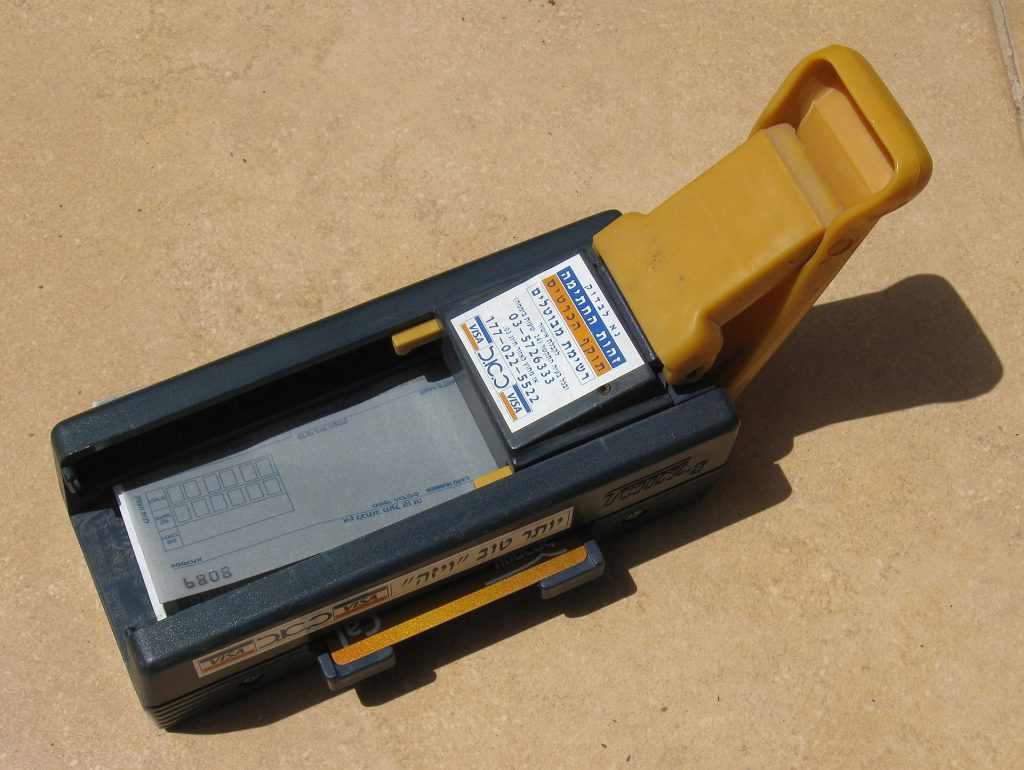Knuckle-Buster
Table of Contents
Knuckle-Buster: Old device, modern back in times
When it comes to financial transactions, the term “knuckle-buster” (credit card imprinter) may not immediately come to mind. However, this old-fashioned term refers to a device that has played a significant role in the history of credit card processing. In this article, we will explore the origins of the knuckle-buster, its evolution, and its impact on the finance industry. We will also discuss how modern technology has rendered this once essential tool obsolete.

The Birth of the Knuckle-Buster
The knuckle-buster, also known as a manual credit card imprinter, was invented in the early 20th century as a solution to the problem of verifying credit card transactions. Before the advent of electronic payment systems, merchants had to rely on physical imprints of credit cards to process payments.
The device itself consisted of a metal plate with a sliding mechanism and a set of carbon-copy receipt slips. To process a transaction, the merchant would place the customer's credit card on the metal plate, align the receipt slip on top, and then slide the mechanism across the card, creating an imprint of the card details on the receipt slip.
The Role of the Knuckle-Buster in Credit Card Processing
During its heyday, the knuckle-buster played a crucial role in credit card processing. It provided a simple and reliable method for merchants to verify the authenticity of credit cards and ensure that the customer had sufficient funds to cover the transaction.
One of the key advantages of the knuckle-buster was its portability. Merchants could easily carry the device with them, allowing them to process credit card transactions on the go. This was particularly beneficial for businesses that operated outside of traditional brick-and-mortar stores, such as traveling salespeople or food vendors at events.
Furthermore, the knuckle-buster provided a physical record of each transaction. This was important for both the merchant and the customer, as it served as proof of purchase and could be used for future reference or dispute resolution.
The Evolution of Credit Card Processing
As technology advanced, the finance industry began to explore more efficient and secure methods of credit card processing. The introduction of magnetic stripe cards in the 1970s marked a significant turning point in the evolution of credit card technology.
Magnetic stripe cards allowed for the encoding of cardholder information on a magnetic strip, which could be easily read by electronic card readers. This eliminated the need for manual imprints and significantly sped up the transaction process.
With the rise of the internet in the 1990s, online payment systems emerged, further revolutionizing the way credit card transactions were conducted. E-commerce platforms and payment gateways enabled customers to make purchases online, eliminating the need for physical credit cards altogether.
The Decline of the Knuckle-Buster
As electronic payment systems became more prevalent, the knuckle-buster gradually fell out of favor. The convenience and speed offered by electronic transactions made manual imprints obsolete.
Today, the use of knuckle-busters is virtually non-existent in most developed countries. Electronic card readers, mobile payment apps, and contactless payment methods have become the norm, providing a seamless and secure experience for both merchants and customers.
The Legacy of the Knuckle-Buster
Although the knuckle-buster is no longer in widespread use, its legacy lives on in the form of modern credit card processing systems. The principles of verification and record-keeping that the knuckle-buster embodied are still fundamental to the finance industry.
Furthermore, the knuckle-buster serves as a reminder of the rapid pace of technological advancement. It highlights the importance of embracing innovation and adapting to new methods of conducting financial transactions.
Conclusion: The knuckle-buster was crucial for credit card verification
The knuckle-buster may have faded into obscurity, but its impact on the finance industry cannot be overlooked. This humble device played a vital role in credit card processing, providing a reliable and portable solution for merchants. However, as technology advanced, the knuckle-buster was rendered obsolete by more efficient and secure electronic payment systems.
Today, we can appreciate the legacy of the knuckle-buster as we tap our cards or use mobile payment apps to make purchases. It serves as a reminder of the constant evolution of the finance industry and the importance of embracing new technologies to improve the efficiency and security of financial transactions.
